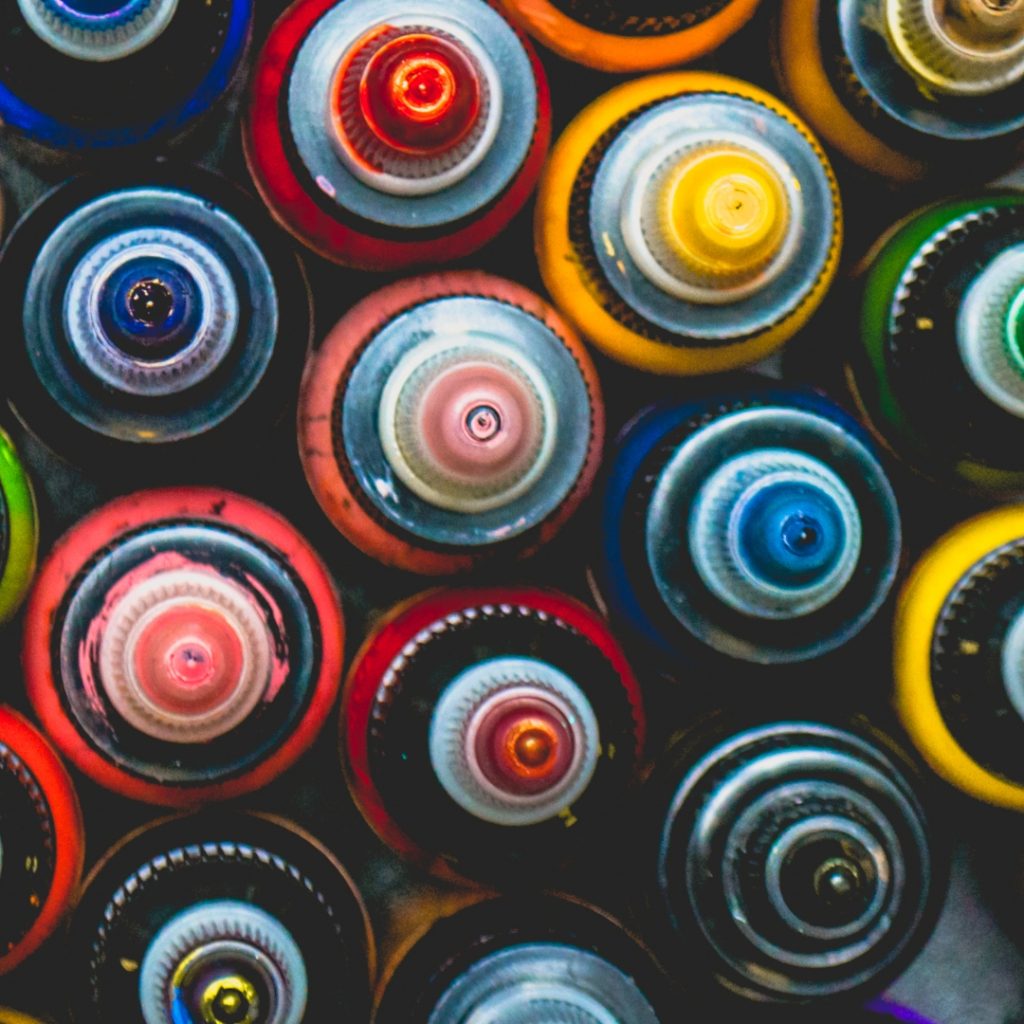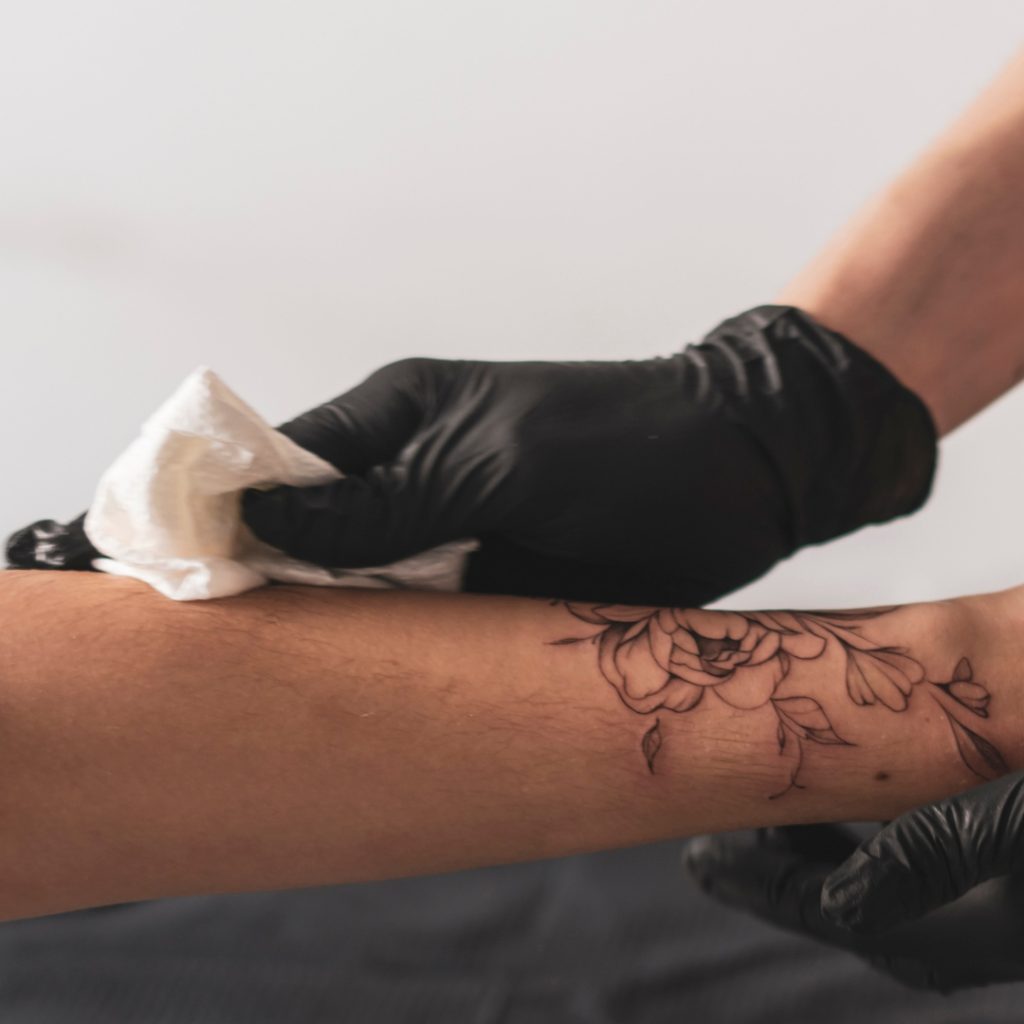Unfortunately, allergic reactions to tattoo ink do happen — even when everything else goes perfectly. That’s why it’s so important to understand what causes them, what to look out for, how to help prevent them, and tattoo aftercare products to soothe sensitive skin.
What’s an Allergic Reaction, Anyway?
It’s basically your body throwing a fit. When your immune system spots something it thinks is a threat, whether it’s food, pollen, or, yeah, tattoo ink, it jumps into action like a security alarm going off at 2 a.m. The result? Redness, itching, swelling, rashes, blisters… and sometimes more serious stuff. Not fun.
What causes it?
Short answer: just about anything. Even a harmless-looking speck of dust can set off an allergic reaction if your body decides it’s the enemy. In tattooing, common culprits include the pigments and dyes found in certain tattoo inks.
Sounds scary—after all, tattoo ink goes into your skin—but here’s the good news: many of these reactions are totally preventable. A little research and a few smart swaps (hello, hypoallergenic supplies!) can make all the difference. Your clients’ skin will thank you, and so will your reputation.

For Tattoo Artists: How to Prevent & Handle Allergic Reactions
As the artist, you’re the first line of defense when it comes to allergic reactions. Here’s how to protect yourself and help prevent a bad reaction before it happens.
Step 1: Know What’s in Your Ink
Start with research on the tattoo ink you’re using. This includes what’s stocked at your shop or your own personal supply. Here’s what you should know:
- The brand name (of course)
- Where it’s made
- How it’s made
- It’s sterility (or lack thereof)
- What ingredients are used
The last one is vital—because not all tattoo inks are created equal. Some brands sacrifice quality ingredients for cheaper ones. And some tattoo inks still contain heavy metals, like mercury, manganese—even lead. Check out What is Tattoo Ink Made Of? and explore the chemistry behind tattoo ink.
Stick with high-quality inks and steer clear of harmful ingredients by choosing trusted brands like these:

Here’s the long and short of it: if you or your shop is using low-quality ink packed with heavy metals, you could be setting yourself and your client up for a world of trouble. That’s why it’s crucial to know exactly what’s in the ink, and just as importantly, what isn’t. Wanna learn more? Read Buying Safe Tattoo Ink for a deep dive into the intricacies of premium tattoo ink.
However, knowing the ins and outs of your ink is only part of the battle.
Step 2: Get Your Client’s Medical History
Keep your clients (and yourself) covered with a tattoo consent form. This lets you document your client’s medical history and uncover any bad effects they’ve experienced from prior tattoo sessions—before discovering it yourself mid-session.
A good tattoo consent form should have fields for your client’s full name, contact information, last meal, any medications or medical history, and any known allergies.
Logging a client’s allergies, like latex, will save you and them a lot of pain if something happens during or after a session. So it’s better to identify any roadblocks beforehand than run into them after you put needle-to-skin.
Feel free to add more info fields—you can’t go wrong with gleaning more information from your client, but be careful not to get too invasive. It’s important to strike a balance between need-to-know information and your client’s privacy.
Step 3: Stock Up on Hypoallergenic Supplies
Allergy-free supplies aren’t just about ink. They also include the behind-the-scenes heroes, like latex-free nitrile gloves and hypoallergenic medical supplies. These small swaps can make a huge difference when it comes to keeping your clients comfortable and reaction-free.
Check out our collection of safe, hypoallergenic, artist-trusted supplies:
- Shadow Black Nitrile Gloves
- Night Angel Black Nitrile Gloves
- Adenna Precision® Nitrile Gloves
- Strong Pro Black Nitrile 4gm Gloves

Step 4: Be a Trusted Source to Your Client
No reaction during the session doesn’t necessarily mean you’re in the clear. Be sure to send your client home with solid aftercare steps and signs to watch for, like:
- Redness
- Swelling
- Soreness or tenderness
- Flaking and itching
These are all normal parts of the healing process and should gradually subside within 3–6 months. If your client experiences more serious symptoms, it’s time to follow up — either with you or a medical professional. They should watch out for:
- Persistent swelling, redness, or pain
- Rash, fever, or chills
- Pus or unusual discharge
- Severe itching or hives
These could be signs of a potential ink allergic reaction or infection and should never be ignored.
Pro Tip: Don’t trap leftover Green Soap under bandages like Recovery Derm Shield. If you don’t rinse thoroughly, the Green Soap residue can react with the adhesive on the Derm Shield bandage, leading to a chemical burn on your client’s skin that’s often mistaken for an allergic response! Make sure you thoroughly clean the area with distilled water or sterile saline before applying Derm Shield. Do this right, and your client should be irritation-free.
Also, advise your clients: if they’re wearing Derm Shield and having a reaction around the tattoo, it likely indicates a chemical burn. If the reaction is on the tattoo itself, that’s more likely to be an allergic response.

Aftercare Tips for Comfortable Healing
To help reduce the risk of a bad reaction, whether from ink or something else, give your client a heads-up on what to watch for, along with these aftercare tips to guide their healing:
- Keep it clean: wash gently and pat dry. No rubbing!
- Keep it moisturized: Apply a tattoo-specific moisturizer daily.
- Keep it covered: Stay out of direct sunlight and opt for loose, breathable clothing.
- Keep it safe: Avoid anything that could bump, scratch, or irritate the area.
These tattoo aftercare products will help keep your tattoo protected and lower the risk of unwanted reactions from outside irritants:
- Recovery Derm Shield
- Recovery Aftercare Tattoo Salve
- Recovery Aftercare Soap
- Saniderm Tattoo Aftercare Transparent Adhesive Bandage
What if Your Client Develops an Allergic Reaction Anyway?
Even when you’ve done everything right, sometimes skin just decides to go rogue. Don’t panic, it happens! The key is knowing what to do next.
Deep Breath—You’ve Got This
Check out the area and assess what’s going on. If things look manageable, apply a cold compress and encourage your client to try recommended, tattoo-specific aftercare products for relief, like Recovery Aftercare Tattoo Salve.
However, if it looks like more than just a minor issue, gently recommend your client see a medical professional. Better safe than sorry.
It’s also important to note which ink you used on the client. If it came from a reputable brand, chances are the reaction was a one-off or color-related—but it’s still something to document in their consent form for future reference.
Conduct a Courtesy Follow-Up
Check in on your client and see how they’re doing. Without being pushy, find out more about their reaction and the doctor’s recommendation for care. This info helps you update their tattoo consent form and note which ink was used.
What matters most is client care and trust. Things can go wrong, but if your client knows you’re in their corner, that support goes a long way.

For Clients: How to Prevent & Handle Allergic Reactions
Do Your Homework
Do a little digging before you book. Scope out shops, read reviews, and find an artist whose work you trust. Once you’ve got someone in mind, set up a consultation. That’s your chance to talk through the design and flag any allergies or skin sensitivities so your artist can be fully prepared for a safe, smooth session.
Speak Up ASAP
Tell your artist about any concerns, be honest AF on your intake form, and speak up during the session if you experience any discomfort or something feels “off.” They’ll take a look and walk you through what to do. For mild reactions, they may suggest soothing aftercare products, like Recovery Aftercare Tattoo Salve to keep things comfy.
Aftercare Matters
A good aftercare routine can’t and won’t neutralize an allergic reaction, but it can often prevent the irritation that you might MISTAKE for an allergic reaction. Always remember: keep it clean, moisturized, covered, and protected every step of the way during its healing journey.
What if I do have an allergic reaction anyway?
Don’t panic if you think you have an allergic reaction brewing. Reach out to your tattoo artist and fill them in — they’ll walk you through what to do next to calm your skin and help protect your tattoo.

When It Comes Down to It…
Using hypoallergenic inks and supplies, along with top-rated tattoo aftercare products, can help prevent allergic reactions before they’re even a thought. Remember: prep smart, tattoo safer.
Also, stuff happens, but how you handle it makes all the difference. Stay calm, be compassionate, and let your professionalism shine. A thoughtful response can leave your client feeling cared for.


Comments are closed here.